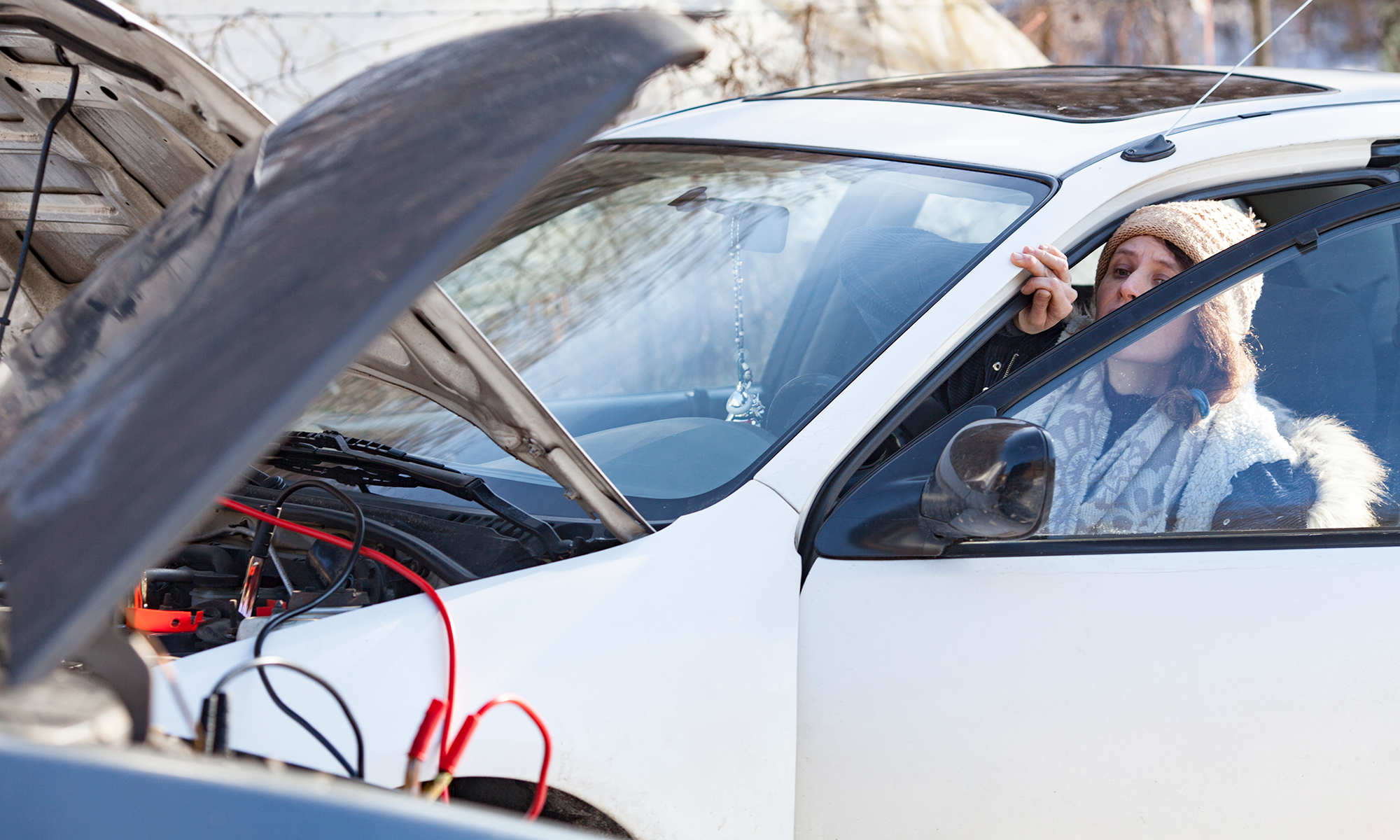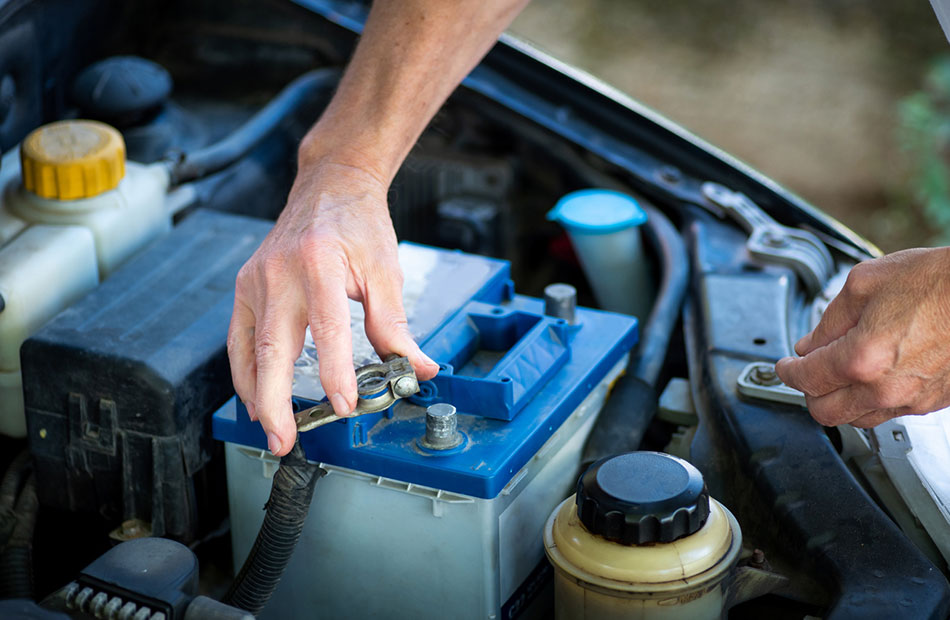Get this deal! Call now.
Speak with a vehicle protection plan specialist and get $300 off any new contract instantly.
Call 866-678-4172
or scan the code below


The winter months can be a trying time for your car, affecting everything from the engine, tire pressure, essential fluids and more. For many drivers, there always happens to be one part of a vehicle that always starts having issues when freezing temperatures arrive—the car battery. The combination of cold weather conditions and shorter trips can be enough to push it over the edge—causing it to fail and leaving you stranded at the roadside.
It’s still quite a while until things get warmer, so learning how to fix a dead car battery should it happen to you is a must for any car owner. Better still, there are plenty of ways to prevent it from happening in the first place, so let’s go over why car batteries die during this time of year and ways you can prevent or remedy a dead car battery.
While car batteries can die any time of year, it’s much more common for them to die during winter. This is because cold temperatures affect how chemical reactions inside the battery acid create electric charges.
When you turn the key in the ignition, liquid electrolytes mix with lead plates inside the battery, and the two react to create an electric charge and start your vehicle. Warmth speeds up chemical reactions, so in summer, the battery needs less power to deliver the required voltage to the starter and stabilize that voltage.
Unsurprisingly, cold has the opposite effect. When the winter weather comes, the battery needs even more power to start and run the engine. If temperatures reach freezing, the average battery loses about 35% of its strength. The lower temperatures go, the harder the battery has to work.
Your vehicle will also have an alternator, an electrical generator located on or near your car’s engine, that helps convert energy from your car when used to help charge your car’s battery. However, your car’s battery will diminish over time due to natural corrosion making it harder for the battery to deliver the necessary charge. If it’s on its last legs, a cold snap could be enough to kill it completely, and your vehicle will be unable to start.

If one thing’s for sure, batteries only seem to die at the worst possible moment. Work through these steps to get back on the road as soon as possible:
First, you need to establish whether you have a dead battery on your hands or another possible issue, like with your alternator. Thankfully, it’s a relatively easy diagnosis. Check for the following signs:
If you’re experiencing any (or all of) the above, you should first attempt a jumpstart.
To jumpstart your vehicle, you’ll need some jumper cables (also known as booster cables) and another vehicle with a fully charged battery. If you don’t already, now is a good time to keep some jumper cables in your trunk with the rest of your emergency car kit. After all, better to have them and not need them than to find yourself stuck waiting for a tow or any roadside assistance you may have.
Once you have your cables and a booster vehicle, do the following:
While a jumpstart is a great “quick fix” when dealing with a dead battery, it’s not a permanent solution. You’ve already learned that your car’s battery power isn’t what it was, and its lifespan is all but up, so a trip to your nearest auto parts store or auto care facility should be a priority so you can get a new battery.
Sometimes, jumpstarting a dead battery doesn’t work. Or, if your battery is visibly cracked and leaking battery acid, it isn’t safe to attempt one in the first place. In these cases, it’s always better to call in the help of an expert. They can get to the bottom of the problem safely and efficiently and install a new battery if you need one, potentially costing you somewhere in the range of $45 to possibly up to $500 or more.
Luckily, if you have an Advantage auto protection plan from Endurance, you can rest easy knowing you’ll have a battery replacement as part of your plans’ special, one-time services. That’s right, along with a battery replacement, you can get cooling system maintenance, a front or rear wiper blade set replacement and more. You’ll even enjoy up to $3,500 in yearly car maintenance services, including engine oil changes (and filter changes), alignment checks, tire rotations, engine diagnostic exams and even help with your car’s next state safety inspection.
The best way to avoid a dead car battery is to take steps to prevent it from happening in the first place. Follow these tips to reduce your chances of being stuck out in the cold:
These simple tips can help you avoid a dead car battery during the frigid winter months, but they can’t prevent every breakdown or issue. With an Endurance auto protection plan, however, you can get peace of mind year-round on those breakdowns or repairs your car insurance can’t help with. So whether it’s your engine, transmission, drivetrain and more, an Endurance protection plan can help keep your car running throughout the year and more without worrying about unexpected and expensive repair bills.
Rain, snow, or shine, you’d be surprised just how much the elements can affect your vehicle—and knowing how to maintain yours throughout the year is key to driving with confidence. However, no matter how well you care for your car, component failure will always happen in the end, usually resulting in an expensive trip to the auto repair shop.
If you want to protect your wallet and reduce the cost of car ownership, a vehicle service contract is always a recommended investment. Endurance is America’s most trusted provider, offering award-winning protection plans for all kinds of drivers. Whether you own a luxury car, plan to use your vehicle for rideshare or delivery jobs, or have a lot of miles on the engine, there’s an Endurance auto protection plan for you.
Better yet, our award-winning customer care members are here to help you craft the perfect plan for your needs and budget, including offering basic powertrain protection for as low as just $79 a month. Plus, regardless of your coverage, you’ll receive complimentary 24/7 roadside assistance, towing and lockout services, trip-interruption coverage, and rental car reimbursements. But that’s not all, as all new customers receive access to a year’s worth of FREE Endurance Elite Benefits, including extra perks and savings like key fob replacements, tire repairs or replacements, collision discounts and even total loss protection. You’ll also be able to take your car to any certified mechanic or repair shop, including your dealership.
To find out more about how Endurance can help you or request a free quote, call us at (800) 253- 8203 or shop online today to find the perfect plan. You can also find more automobile-related resources on the Endurance blog, including articles on topics ranging from extended warranty coverage comparisons to vehicle buying guides, DIY maintenance tips and tricks, and more.

We're here to make sure you get the most comprehensive EV protection. That's why we've partnered with Xcelerate Auto to offer you transparent and dependable Tesla coverage.
Want us to contact you about XCare coverage for your Tesla?



Call for $300 off any new plan!
By clicking the button, you consent to Endurance using automated technology to call, email, and text you using the contact info above, including your wireless number, if provided, regarding auto protection or, in California, mechanical breakdown insurance. You also agree to the Endurance Privacy Policy and Terms and Conditions. Consent is not a condition of purchase, and you can withdraw consent at any time. Message and data rates may apply.
Speak with a vehicle protection plan specialist and get $300 off any new contract instantly.
Call 866-678-4172
or scan the code below



Simply fill out the information below and we will follow up fast with your free no-obligation quote.
By clicking the button, you consent to Endurance using automated technology to call, email, and text you using the contact info above, including your wireless number, if provided, regarding auto protection or, in California, mechanical breakdown insurance. You also agree to the Endurance Privacy Policy and Terms and Conditions. Consent is not a condition of purchase, and you can withdraw consent at any time. Message and data rates may apply.

To speak to a vehicle protection plan specialist and save $300
Scan the code below
Larry Witherspoon Jr. is a co-founder and Executive Director of the Automotive Training Center. Larry has held multiple leadership positions in the U. S. Navy and with various Fortune 100 companies. In addition to his business experience, Larry grew up understanding the difficulties all young men face becoming adults especially those that come from challenging circumstances. He has taken those experiences growing up and combined them with his passion for vehicles to start the Automotive Training Center. Read more about Larry.